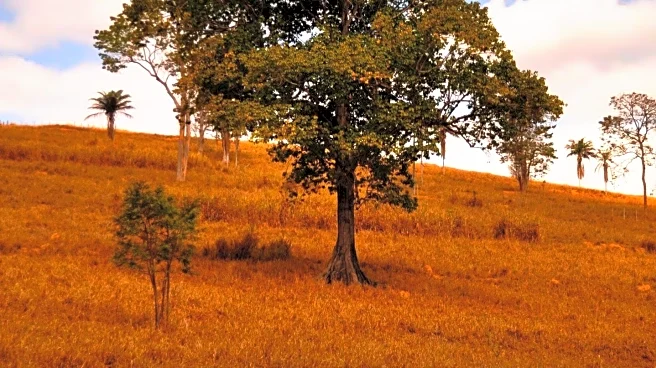What's Happening?
Geese migration is influenced by the declining daylight and changing temperatures, triggering hormonal changes that prompt their journey south. Jacques Bourgeois from the Oak Hammock Marsh Wetland Discovery
Centre explains that geese rely on natural landmarks rather than GPS for navigation. Climate change has affected migration patterns, with dry conditions leading to varied success rates and altered schedules. Geese from different regions have distinct migration paths, with those from Churchill starting earlier due to longer distances, while others from southern Manitoba head to closer destinations like Minnesota.
Why It's Important?
Understanding geese migration patterns is crucial for wildlife management and conservation efforts. The impact of climate change on these patterns highlights the need for adaptive strategies to support migratory species. As geese adjust their routes and timing, it affects ecosystems and biodiversity, influencing food availability and habitat use. This knowledge can inform conservation policies and practices, ensuring the protection of migratory birds and their habitats. Additionally, it raises awareness about the broader implications of climate change on wildlife and natural processes.
What's Next?
As migration continues, monitoring geese patterns will be essential to assess the ongoing impact of climate change. Conservationists and researchers may focus on studying the effects of altered migration on ecosystems and developing strategies to mitigate negative impacts. Public awareness campaigns could be launched to educate communities about the importance of preserving natural landmarks and habitats that support migratory birds. Collaborative efforts between environmental organizations and government agencies may be necessary to address these challenges effectively.












